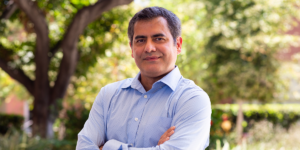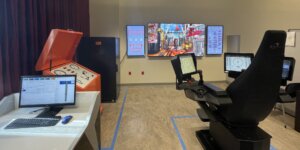
The Planet Earth. Image/iStock
A new research center, the Center for Advanced Reservoir Characterization and Forecasting has been established at the USC Viterbi School of Engineering. The center, seeded by Foundation CMG, intends to advance scholarly achievement in fluid flow in complex subterranean environments. It will be directed by Behnam Jafarpour and Kristian Jessen, associate professors in the Mork Family Department of Chemical Engineering and Materials Science at the USC Viterbi School of Engineering.
The center will aim to establish a multi-sponsored research program to develop dynamic characterization and advanced forecasting technologies to improve the modeling and simulation of subsurface energy and environmental systems. The enhanced understanding and modeling of multiphase fluid flow in heterogeneous geologic rock formations has implications in a number of critical energy, hydrological, and environmental applications, as well as the underground sequestration and disposal of CO2 and other wastes.
The vision of the new center is also aligned with the “Transparent Earth” Grand Challenge posed by Section 11 of the National Academy of Engineering and the Department of Energy aimed to enhance our understanding of complex subsurface rock properties and their associated flow and transport characteristics. The two center directors will lead the establishment and the sustenance of a long-term multi-sponsored research program to develop advanced computer modeling and simulation technologies and to train the next generation of engineers, geoscientists, and computer modelers in cutting-edge dynamic reservoir characterization and advanced physical modeling.
The goal for the center, “is to advance subsurface science and engineering by developing novel dynamic characterization and prediction technologies,” says Jafarpour, who will oversee the research on dynamic reservoir characterization. Jafarpour, who has a joint appointment in the Ming Hsieh Department of Electrical Engineering, believes that novel signal processing and imaging techniques can greatly assist this task.
Kristian Jessen, the co-director of the center will work on advanced forecasting with the aim of improving simulation technologies to model fluid movement in the subsurface of the earth. “Many of the existing technologies,” said Jessen, “were developed over past decades for solving a different set of problems than what we are facing today”. He hopes to advance the prediction of fluid movement in the subsurface and to create algorithms that will allow implementing new models in next generation simulation technology.
Published on September 27th, 2016
Last updated on March 10th, 2017












